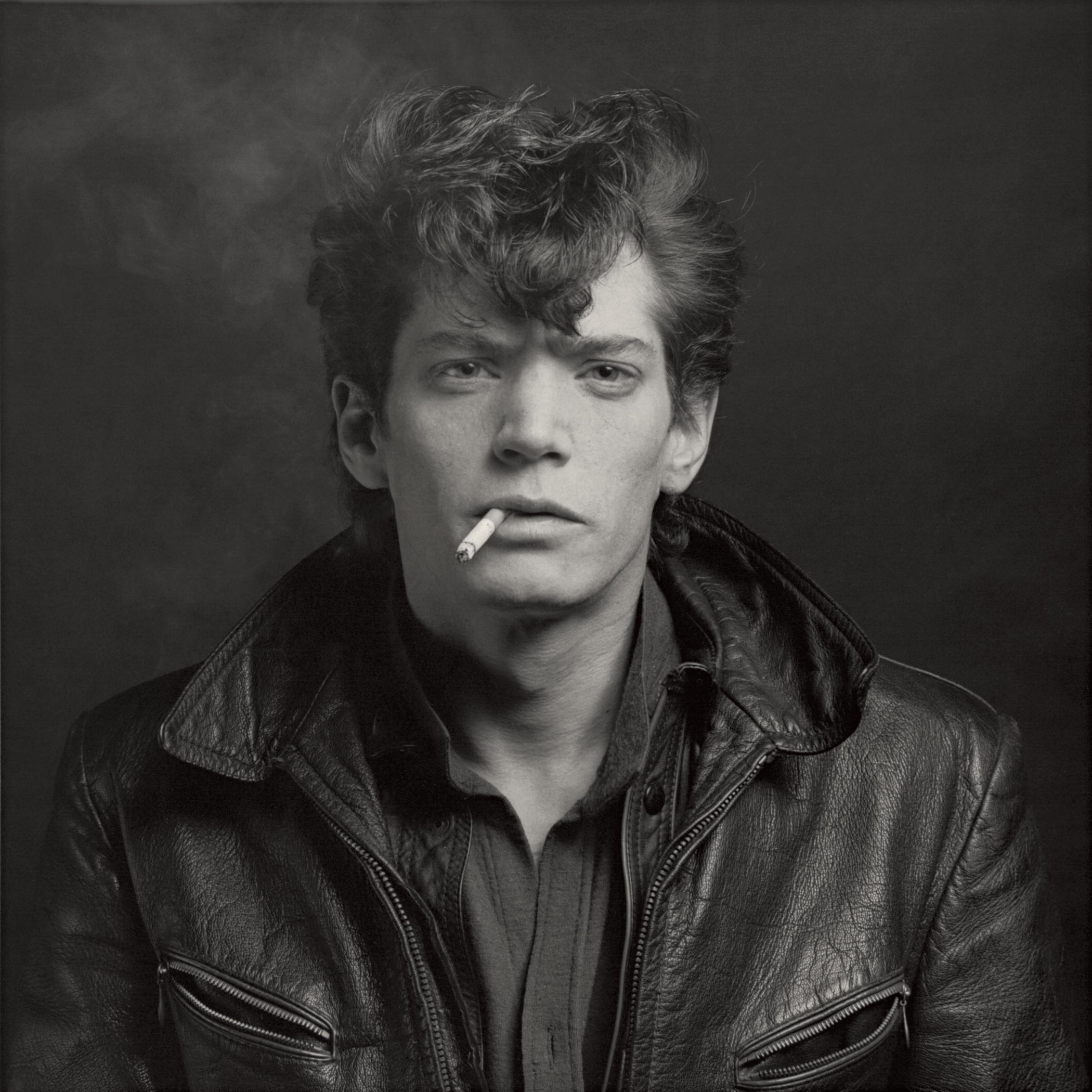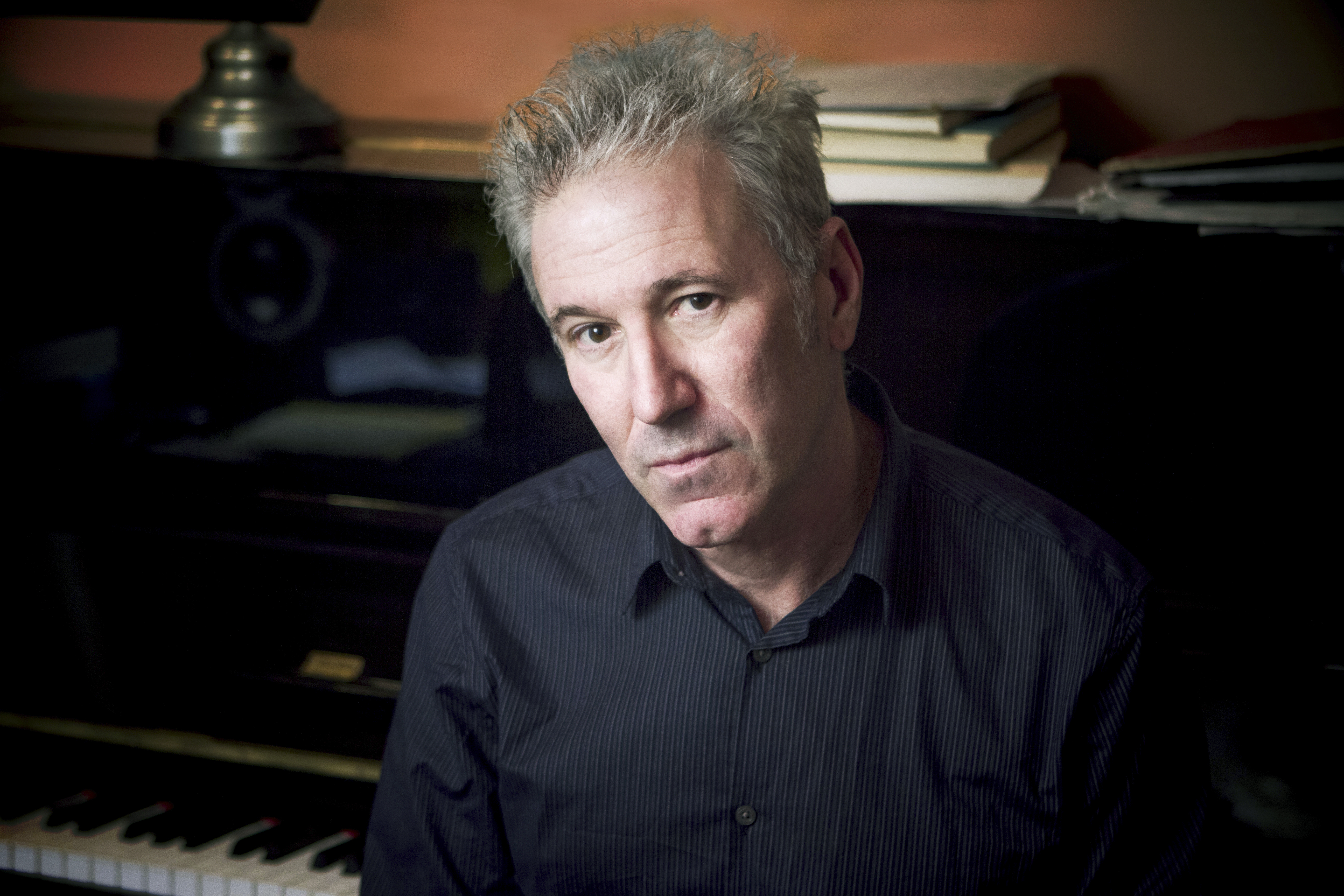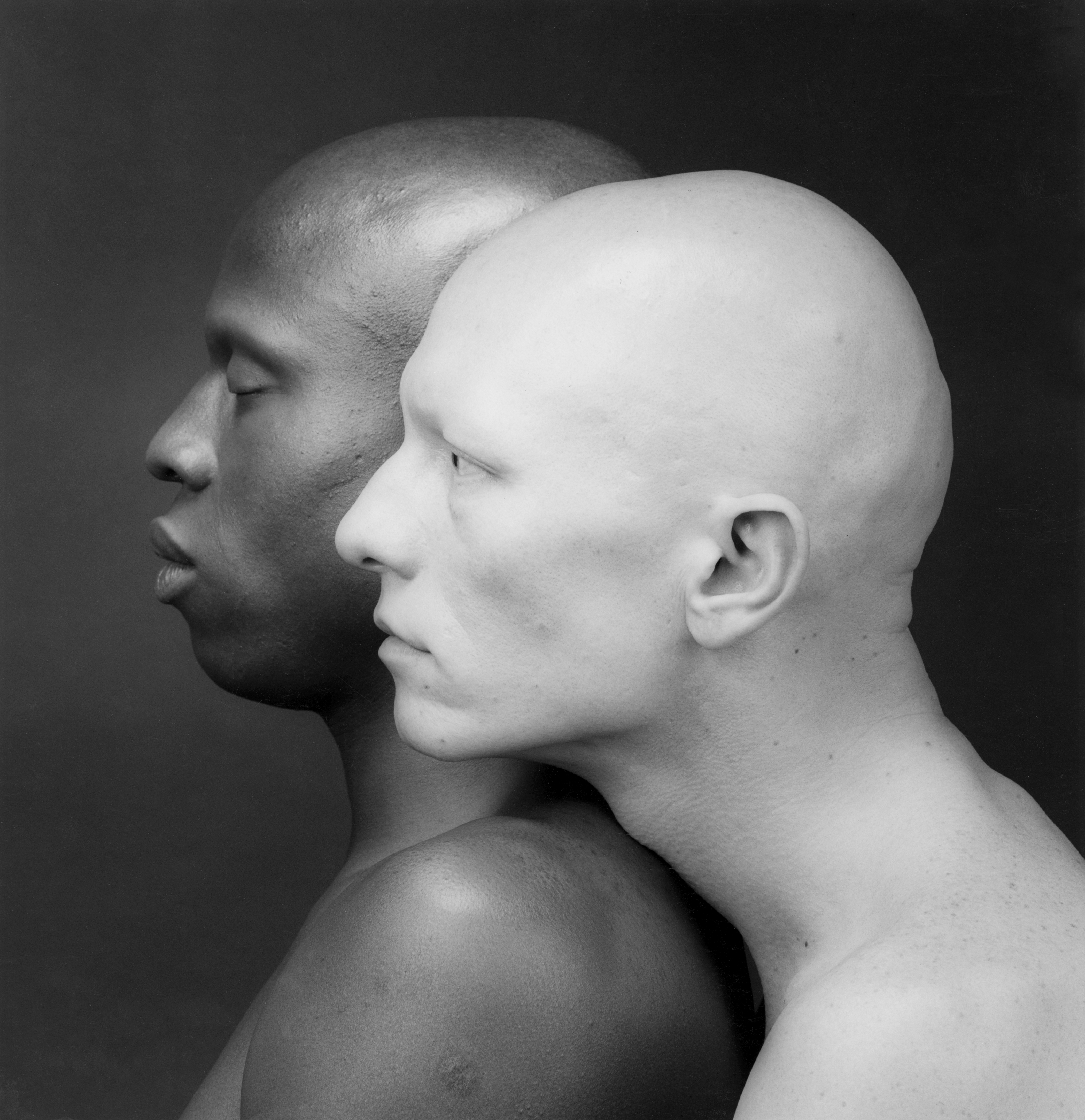Ask the Composer: David Benjamin Steinberg on scoring HBO’s “Mapplethorpe: Look at the Pictures”
Mapplethorpe: Look at the Pictures (2016) looks at artist Robert Mapplethorpe’s outrageous life and work, using rediscovered interviews with the photographer and conversations with his family, friends and lovers. The documentary, directed by Fenton Bailey and Randy Barbato, tells the story of how Mapplethorpe helped turn photography into a fine art while igniting culture wars that rage on today. Allowing the photographer himself to narrate with candid honesty through the recovered archive footage, the film (whose title comes from politician Jesse Helms’ denouncement of Mapplethorpe: “Look at the Pictures”) screened at the Sundance Film Festival and Berlinale 2016 in advance of its HBO release on April 4, 2016.
For the Sundance premiere, ScreenPrism talked to the film’s composer, David Benjamin Steinberg. The versatile Steinberg has scored everything from acclaimed documentaries like Inside Deep Throat (2005) to reality shows like Bravo’s Million Dollar Listing (2006 - ) and the opening theme songs of nearly 30 TV series, as well as ad campaigns for Mattel Toys, Energizer, Nissan, Honda, and Infiniti, among many others.
For Mapplethorpe: Look at the Pictures, Steinberg had to create music to mirror Mapplethorpe’s art and life, which in many ways echoed the duality of his black-and-white photography style. ScreenPrism asked Steinberg about his approach to musically capturing Mapplethorpe’s personal life, the feeling of viewing his photographs and the artist’s race to achieve success before his early death due to AIDS.

Robert Mapplethorpe. Photo Credit: Robert Mapplethorpe Foundation/ Courtesy of HBO
ScreenPrism: In Mapplethorpe: Look at the Pictures and your work for different films, TV and commercials, you use a wide range of musical styles and instruments.
David Benjamin Steinberg: You have to wear a lot of hats to keep working in LA. I like mixing it up and working in different milieus. I would probably get bored if I just did one kind of thing all the time.
SP: You cite diverse influences for your music, from Nino Rota, Ennio Morricone and Bernard Herrmann to The Beatles. Is that part of your desire to compose in a variety of styles?
DBS: I really like lots of different kinds of music. And I think it’s part of what’s kept me open to working so many different kinds of things. When I was a kid, when I heard the Beatles, they blew my mind. I think about it like in Close Encounters of the Third Kind (1977) when the spaceship went over Richard Dreyfuss and it left this imprint in his brain—I kind of think of the Beatles like that. Once I heard them, it left a huge impression on me. But do I refer to them in my writing? I would say not typically. But I feel I always refer to that feeling of when you connect with music as a kid, and it really resonates, and it’s so exciting and magical. I still try and make that kind of connection when I’m working on a project. And I always wait for something to have that same kind of resonance, and I know I’m on the right track when I reconnect with that muse.

Composer David Benjamin Steinberg
SP: What’s your composing process? Do you start from a motif for a character or a person, or do you start from an idea of what the audience should feel?
DBS: I would say both. With Mapplethorpe, I definitely started with trying to come up with a theme or themes for his character. I started to learn about him, and the theme started at the piano. “Floral Park” was the first cue that was written for the film. [Mapplethorpe] was raised in Floral Park, so for the sections of the film that look into his childhood, that seemed like a nice place to start. I was looking for something that was sort of melancholy but with a little twist to it. So that theme came first, and then a lot of the motifs in the film came out of discussions with the directors. They wanted me to help define this character and tell his story with the music. [Mapplethorpe] had a lot of contrast, and he was a dark character, but he was also an incredible artist, very driven, extremely ambitious, crazily creative, and there were a few aspects of his character that they wanted me to help to underscore—his sort of relentless drive that he had, and one of the motifs, or one of the themes that weaves through the film, is a relentless, driving, industrial cue.
SP: Tracks like “Dark Room” have that industrial, more electronic, thriller feel. What are you trying to make us feel with these cues?
DBS: Robert was also a druggie. He liked to drop acid, and he liked to snort coke. “The Dark Room” was written for a scene where he is developing film late into the night and into the morning, and he was a sort of serial collaborator. Actually Robert didn’t know that much about photography. He didn’t know how to develop film, so he relied on his brother, who studied photography—Robert never actually studied photography; he was an art student who had no interest in photography. So he brought in people who helped him refine his work. One was his brother, and, in this particular scene, “The Dark Room,” he’s working with his assistant, and they’re developing film, and the sun’s coming up, and they’re getting stoned. This idea of ambient textures and hazy flavor is really prevalent in the score. He was kind of a trippy guy; there was a lot of backwards stuff and a lot of textures floating around. The directors wanted to capture this idea that in New York in the 70s and early 80s, there was this real hot bed of creativity. Warhol was there; a lot of great bands were there. So [we had] this idea that [it] was almost as if a radio station were bringing in these crazy frequencies that were all being channeled into the music, the art and the photography of that period. It’s like an outer space radio station that’s channeling things to New York City. My challenge was to figure out how to do that and make it musical.
At one point, the score was going to be primarily ambient. When I was working on the film, I saw a rough cut—it was quite long—and a lot of it was ambient, textural. One thing that changed, as the edit got tightened up and as they started getting more focused on what the score was going to be, was to throw out some of the ambient stuff. Of course these decisions happen, you know, talking to the directors and the editors. A theme evolved which we called “Robert’s Race against the Clock,” and you hear a little bit of that, I think, in that “Dark Room” cue, the sort of clock-ticking idea. But there is a particular cue that weaves throughout the film, which is Robert’s race to get his work done and become famous before he dies prematurely of AIDS at 42. So this cue weaves through the film and hopefully conveys the idea that the clock is ticking and gives it a sort of urgency to some of those sequences.
SP: In contrast to the urgency of those cues, the piano melody of “Floral Park” captures what it’s like to look at his pictures. They way they are haunting, understated yet powerful. How did you go about embodying the look and feel of his pictures in sound?
DBS: I don’t think he ever worked in color—maybe the last couple of pictures and photographs he took were in color—but virtually everything he did [was black-and-white], and I think part of that simplicity comes from that. But he had an eye for symmetry. His subject matter really ran the gamut because he was famous for doing these black-and-white, sort of dark versions of flowers that are really quite beautiful, but also his controversial sex photographs were the flip side of that.

Photograph by Robert Mapplethorpe. Photo Credit: Robert Mapplethorpe Foundation/Courtesy of HBO
And so sometimes the music is pretty, in its dark way, and then for some of the sex pictures, that’s where the industrial drums [come in]. There’s a lot of filtered and deconstructed drums—nothing really organic about the drums because we wanted it to be deconstructed. I had proposed to the directors early on that the music might have a feeling of things coming in and out of focus, like a photograph, where things are very filtered and at times indistinguishable, and then as the track goes on it might become more clear. One of my favorite cues in the film is [when] someone is talking about having been in a dank and grungy club in New York in the late 70s, and the whole cue sounds as if we are hearing it very muffled coming up through, you know, when you walk in New York City and you see these doors that open up on the sidewalk, or you hear a club door open and the music kind of seeps out into night, so the whole cue is almost as if you’re hearing it coming up from the sidewalk.
The other thing that works about the stark piano, in terms of the score: it’s a nice break from the more intense industrial and ambient textures, a lot which are sort of grating because we wanted to get across that edge, and so piano is a good counterpoint. There’s another motif that runs through the film, “Mozart’s Requiem.” Robert was very influenced by the iconography of the church. Growing up he was a choirboy, and a lot of his photography work draws upon his obsession with images from the church, which he twists in his own dark way. The Requiem is a motif [for]sequences that involve his connection to the church. That also ends up being one of the motifs that is used as he’s starting to get very ill, and ultimately that’s the cue that is playing when he dies. Is that a spoiler alert?
SP: I don’t think so — it’s a documentary!
DBS: Have you read the Patti Smith book that she wrote about her relationship called Just Kids? I highly recommend it. It’s her story about the two of them growing up in New York, becoming artists. When I got the gig, that’s the book I read that let me know… they talk about the kinds of music they used to listen to, and that was helpful for me.
Some of the electronic stuff in the film came out of the directors’ knowing that Robert was really into electronic music. He liked rock ‘n’ roll, too, but he was really into some bands like Tangerine Dream and electronic groups of the day, so that was part of the inspiration for having a good part of the score be synthesizers as opposed to classical or really organic. I would often bring in something that was organic and have it thrown out because the directors wanted to keep that back and forth going on between the piano and the more synthesized stuff.
SP: In general do you use more synthesizers or real instruments in your compositions?
DBS: Almost all the score was done in my studio on the computer using synths and samplers. I brought in a guitar player I think for two cues. One I recorded here, and one I skyped with. So a couple cues have guitar, and a lot of the manipulated sounds and reverse effects I created by experimenting with reversing samples that I had or having somebody play something and then flipping it backwards on the computer. My main instrument is drums, but I play composer’s keyboard, and the piano motifs, for example, I just sketched out here and then sequenced them at home in my workstation setup.
It’s usually a hybrid. Typically I’ll bring a couple of musicians in, but often, on documentaries especially, you always try to work within a strict budget. Typically, there’s not going to be an orchestra or a live string section, so you’re always kind of faking it.
SP: When you do more fiction or commercials, do you tend to use more live musicians?
I do. Again, it depends on what the brief is, what the budget is, and what the project is. Mattel Toys has been a long-time client, and when I do tracks for them, Hot Wheels, it’s a lot of shredding guitars. There are some things you definitely need live players for. When I can afford to, it’s always great to work with live musicians. It’s fun to work with friends. It’s a really nice break from sitting alone in a studio sequencing stuff on a computer. I also do the music for a reality show series called Million Dollar Listing, and that is always stuff that I sequence at home.
SP: What is like scoring for a reality show?
DBS: The main difference is that the music is typically not written to picture [in reality shows], unlike in documentaries [for which] you’re really scoring to picture. And because the edit on the reality show is changing constantly, you’re really providing, you’re building a library for the editors. They edit to the music, as opposed to my scoring to picture. Now, in each episode, there might be one scene where they need “Chinese hip hop music” because somebody’s getting Chinese food, so you have to create that and that’s often scored to picture. But, in reality, you’re building a library and building genre folders that the editors will go through as they’re building a show. So it’s different; in fact, it’s very different. The documentaries tend to be more nuanced and complex in terms of the emotional vibe of the music. Like the music for Mapplethorpe sort of falls through the cracks. The music I did for Mapplethorpe is a world away from the reality show. It’s much weirder.
SP: Have you seen changes in composing over the years? Are computers a bigger part of the process now?
DBS: I got into writing music to picture, and immediately did it working on the computer. That was part of how I was able to learn how to do it, I could experiment and try to put sounds. I never went to film school. I studied music, but I never studied film scoring.
I started in advertising—that was in my twenties, in the 80s. Then I started doing documentaries about 10 years later. Advertising was how I learned writing to picture. I started working on documentaries as a sound designer and mixer. I was mixing a show, and I said, let me write a couple of cues, and that led to starting to work in documentaries. I’ve done about 20 documentaries. Most of the work I’ve done has been for directors Randy Barbato and Fenton Bailey who did Mapplethorpe—they’re really excellent filmmakers.
SP: What first made you realize you wanted to write music for picture?
I was so knocked out by some scores that I was hearing when I started to get into it. Carter Burwell was writing music for the Coen Brothers, and composers were doing scores that weren’t these big John Williams orchestral scores, and I connected with that—the idea that scores could be more small-group focused. Cliff Martinez was working on Steven Soderbergh’s films. I was really inspired when I heard Stewart Copeland doing Rumble Fish (1983), Coppola’s movie, and being a drummer, hearing how he used loops and drums to do the score of that film was very inspiring for me. I really got the bug because there were a lot of films and ads that I liked. I started recording on VHS tapes all the commercials that I liked. I wouldn’t watch the programs; I would just watch the commercials. I was more interested in the sound of the commercials—they were like little poems.
Something really magical happened when there was a great piece of music married to a great piece of film. Something happened there that really attracted me and got me excited and interested, and I wanted to see if I could do that myself.

